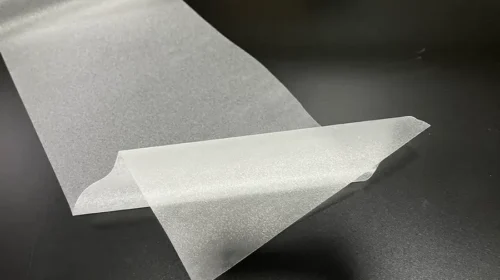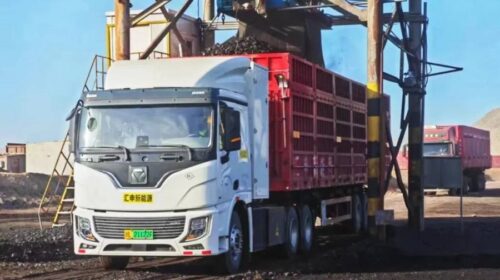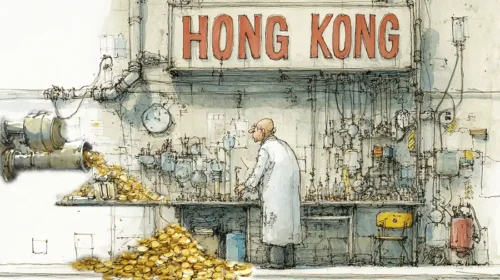Shanghai Refire hitches ride on Beijing’s green ambitions train as it eyes Hong Kong IPO

The maker of hydrogen cells has applied to list in Hong Kong, reporting rapid growth for its products as Beijing pushes to reduce greenhouse gas emissions
Key Takeaways:
- Shanghai Refire has filed for a Hong Kong IPO three years after scrapping a plan to go public in Shanghai
- The company’s business is booming as China’s market for hydrogen fuel cells expands on the back of growing government support
By Warren Yang
There’s no question that Beijing’s commitment to a green future has boosted companies producing environment-friendly technologies. But converting rapid revenue growth into profits isn’t always so easy, which may be a key investor concern for hydrogen fuel cell maker Shanghai Refire Group Ltd. as it seeks to go public in Hong Kong.
Shanghai Refire filed for a Hong Kong IPO last Thursday, marking its second attempt to list after it scrapped a plan to sell shares in Shanghai three years ago. If all goes as planned this time, the company could raise more than $100 million, the Wall Street Journal reported last week, citing unnamed sources.
It’s not clear why Shanghai Refire scrapped its Shanghai IPO plan, though many growth companies have taken similar steps after facing long waits to list on China’s two Nasdaq-style boards for them. But the company certainly has a lot going for it right now. China is serious about shedding its title as the world’s largest greenhouse gas emitter, with an ambitious goal of achieving net zero carbon emissions by 2060. Meeting the target will require a major transformation of how the Chinese economy operates, with renewable energy playing a big role.
Against this backdrop, hydrogen cells are emerging as a promising alternative for fossil fuels, particularly to power vehicles. Hydrogen cells store energy efficiently and only emit water as a byproduct.
Seeing big potential in hydrogen fuels, the Chinese government is piling up incentives for the development of vehicles powered by this alternative energy source, similar to what it did for the massive electric-vehicle (EV) industry. The National Development and Reform Commission (NDRC), China’s state planner, has given the energy source a big place on its new energy roadmap, including deploying 50,000 hydrogen fuel-cell vehicles (FCEVs) on the road by 2025.
Related to the effort, the Ministry of Finance and some other government bodies started a pilot project in 2020 to develop five city clusters, including the Beijing-Tianjin-Hebei zone, with FCEV industrial chains and related technologies. The five aim to produce a total of more than 30,000 FECVs by 2025, mostly commercial vehicles like trucks that can benefit from hydrogen cells’ significantly shorter refueling times than electric batteries. Zones that meet their targets can receive bonuses from the central government, and many local governments are offering their own subsidies as well.
That active government support is lighting a fire in demand for hydrogen cells in China. The total value of hydrogen consumption in China increased by 36% to 333 billion yuan ($46 billion) in 2022 from four years earlier, and growth is projected to accelerate in the coming years to hit 613 billion yuan by 2027, according to third-party market data in Shanghai Refire’s prospectus.
Founded in 2015, Shanghai Refire is a pioneer and the top player in the country’s hydrogen fuel market. It ranks first in China in the total power output of hydrogen cell systems for heavy duty trucks, controlling more than quarter of the market, it said in its prospectus. It also is the leader in terms of accumulated mileage operated by FCEVs running on its products sold through September last year.
Hydrogen one-stop shop
Shanghai Refire’s businesses aren’t limited to making hydrogen cells, and the company essentially wants to be a one-stop shop for all things related to the technology. That includes not only designing and manufacturing cells, but also making related components. In addition, the company sells hydrogen-cell production systems and provides engineering and technical services, although these are a negligible part of its business.
Shanghai Refire’s business is as China’s overall hydrogen cell market expands. Its revenue increased 15% to 605 million yuan in 2022 from the prior year, and the growth rate jumped to 90% for the first nine months of last year compared with the year-earlier period.
But as with many emerging industries, there’s also a problem with the company when it comes to the bottom line. It incurs heavy fixed and production costs and spends heavily for R&D, which raises questions on its potential to become profitable anytime soon. In 2022, Shanghai Refire’s gross profit margin was just 8.2%, although that improved to 15.8% in the first nine months of last year.
But when marketing, administrative and R&D spending are added, the company is deeply in the red. It reported a 546 million yuan net loss in 2022, and its 460 million yuan loss in the first nine months of last year was wider than the 443 million yuan loss for the year-ago period.
Shanghai Refire’s production costs as a percentage of sales will inevitably drop over time as its technology improves, and as it achieves greater economies of scale. It should also benefit from lower costs as more key parts for hydrogen cell systems become available in China, eliminating the need for imports.
But reaching profitability seems like a way off. And as often happens in China, growing government incentives to develop such new technologies will inevitably draw many new players into the field, some with far deeper resources than Shanghai Refire.
Heavy costs are a common challenge for hydrogen cell makers. Among Shanghai Refire’s global peers, Plug Power (PLUG.US) in the U.S. and Ballard Power Systems (BLDP.US) in Canada are both unprofitable after years of operation. And their situation was even worse than Shanghai Refire as they are already in the red even before adding operating expenses.
Plug Power trades at a modest price-to-sales (P/S) ratio of 2.6, while the multiple is much larger for Ballard Power at 12.5. Yet another unprofitable hydrogen cell maker, FuelCell Energy (FCEL.US), has a P/S ratio between those two at 4.2. Getting valued at four times its 2022 revenue, roughly the median of the three other producers, would give Shanghai Refire a market capitalization of about $320 million. But the company may be aiming for a higher valuation, at least based on the $100 million fundraising target reported by the Wall Street Journal.
Shanghai Refire can be an exciting growth story under the broader umbrella of green development in China. But that alone may not be enough to sustain investor interest if it fails to show a convincing road to profitability – something that could be hard due to the industry’s relatively early development and also the likelihood for the arrival of new competitors.
To subscribe to Bamboo Works free weekly newsletter, click here






